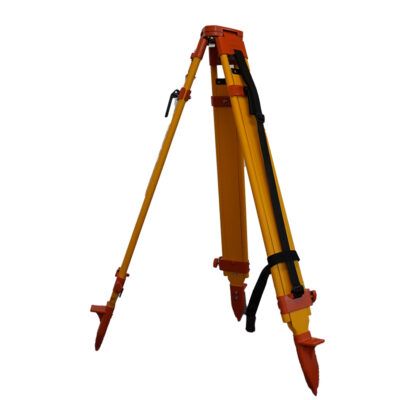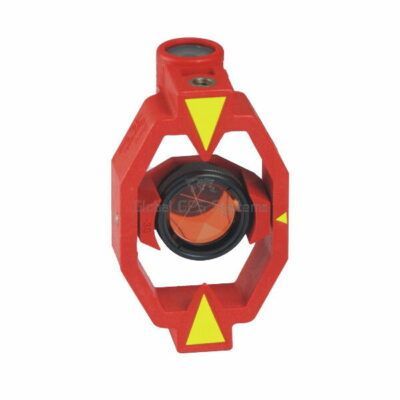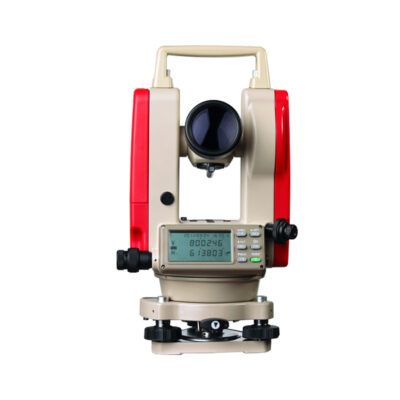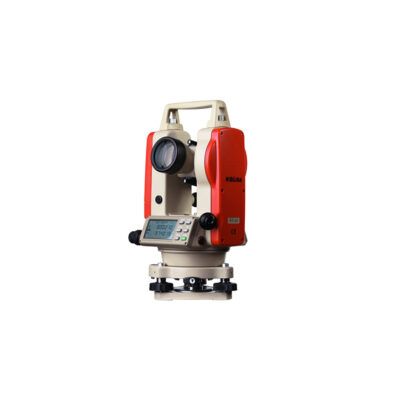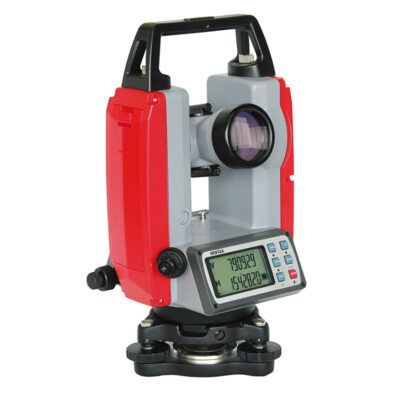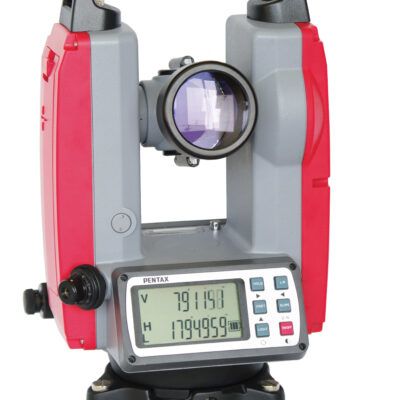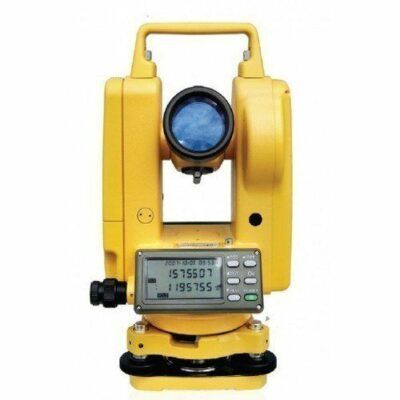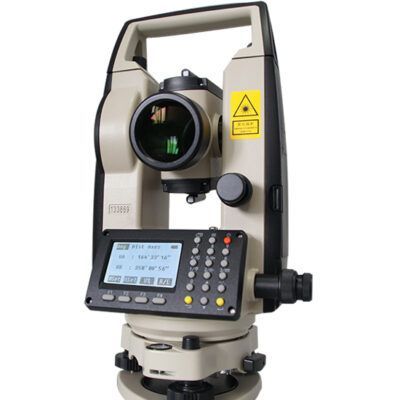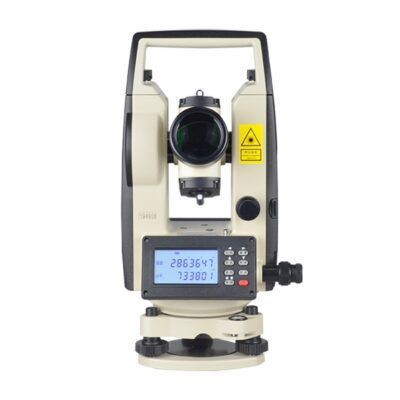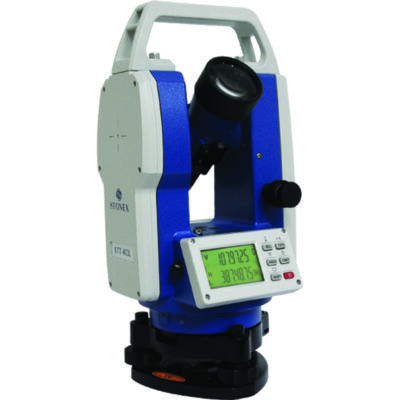THEODOLITES
A theodolite is a precision instrument used for measuring angles in the horizontal and vertical planes. It typically consists of a telescope mounted on a tripod and is used for surveying, construction, and other applications that require accurate measurements of angles and distances. Theodolites have a rotating mechanism that allows the user to measure angles in both the horizontal and vertical planes, and they often have built-in leveling tools to ensure that the instrument is properly aligned. They are commonly used in construction, engineering, and surveying projects, as well as in other applications where precise measurements are required.
CUSTOMER REVIEWS
Global GPS Systems
4.76 store rating (533 reviews) | 4.66 product rating
History of the Theodolite
Theodolites have been used for centuries to measure angles and distances. The first theodolite was invented in the 16th century by the Dutch mathematician and astronomer, Gemma Frisius. It was a simple instrument that consisted of a compass mounted on a tripod, with a sighting device that allowed the user to align the compass with a distant point.
Over time, the theodolite evolved to become more sophisticated and accurate. In the 18th century, the British mathematician and surveyor, Jesse Ramsden, improved the design of the theodolite by introducing a more precise method of measuring angles and a more stable tripod.
Components and features of Theodolites
A modern theodolite typically consists of the following components:
A telescope: This is the main component of the theodolite, and is used to sight on a distant point. The telescope is mounted on a horizontal axis and a vertical axis, which allows it to rotate in both planes.
A compass: This is used to align the theodolite with magnetic north.
A bubble level: This is used to ensure that the theodolite is level and that the telescope is pointing straight ahead.
A graduated circle: This is used to measure angles in the horizontal plane. It is typically divided into degrees, minutes, and seconds.
A vertical circle: This is used to measure angles in the vertical plane. It is also typically divided into degrees, minutes, and seconds.
A tripod: This is used to support the theodolite and keep it stable.
A plumb bob: This is used to ensure that the theodolite is vertical.
Theodolite Applications
Theodolites are used in many different fields, including:
Land Surveying: Theodolites are used to measure angles and distances in order to establish the location of points on the earth’s surface. This information is used to create maps and to determine property boundaries.
Construction: Theodolites are used to ensure that buildings and other structures are constructed to the correct specifications. They are used to measure angles and distances in order to ensure that the building is level and that it is square.
Engineering: Theodolites are used to measure angles and distances in order to determine the precise location of points in space. This information is used to design and build bridges, tunnels, and other structures.
Mining: Theodolites are used to measure angles and distances in order to determine the location of mineral deposits. This information is used to plan mining operations and to map the underground mines.
Photography: Theodolites are used to align cameras with the subject in order to ensure that the image is level and that the camera is pointing in the correct direction.
Accessories for Theodolites: Essential Add-Ons for Enhanced Performance
Theodolites are precision instruments that require proper care and maintenance to function correctly. Along with regular calibration and cleaning, theodolites also require a variety of accessories to enhance their performance and extend their lifespan. In this article, we will discuss some of the essential accessories that are needed for theodolites and how they can improve the accuracy and efficiency of your measurements.
Tripods and Tripod Heads
A tripod is an essential accessory for a theodolite as it provides a stable base for the instrument. Tripods come in different materials, such as aluminum or carbon fiber, and can be adjusted to different heights to accommodate the user. Tripod heads are also available in various designs, such as quick release or geared, to make it easier to level and adjust the instrument.
Cases and Covers
Theodolites are delicate instruments and require protection from dust, moisture, and impact. A durable carrying case or cover can help to protect the instrument from damage when it is being transported or stored. Cases and covers come in different sizes and materials, such as nylon or leather, to fit different models of theodolites.
Batteries and Chargers
If you are using a digital theodolite, it will require batteries to function. It is important to have extra batteries on hand as well as a charger to ensure that the instrument is always ready for use. Some theodolites also come with a built-in rechargeable battery, which can be charged using a USB cable.
Targets and Prisms
Targets and prisms are accessories that are used to reflect the laser beam from a total station or digital theodolite. They come in different shapes and sizes, such as circular or triangular, and can be used for a variety of applications. Targets are used for close-range measurements, while prisms are used for long-range measurements.
Software and Data Collectors
To take full advantage of the features of a digital theodolite, you may require specialized software and data collectors. These accessories can be used to control the instrument remotely, store and analyze measurement data, and create detailed reports. Software and data collectors vary in terms of their capabilities and features, and it is important to choose one that is compatible with your instrument and meets your specific needs.
In conclusion, theodolites are precision instruments that require proper care and maintenance to function correctly. Along with regular calibration and cleaning, theodolites also require a variety of accessories to enhance their performance and extend their lifespan. Some of the essential accessories that are needed for theodolites are tripods, cases, batteries, targets, prisms, software and data collectors. By having the right accessories, you can improve the accuracy and efficiency of your measurements and ensure that your theodolite is always ready for use.
Total Stations vs Theodolites: Understanding the Differences
When it comes to measuring angles and distances in the field of land surveying, construction, and engineering, two instruments that are commonly used are total stations and theodolites. While both instruments are similar in their capabilities, they differ in their design and functionality. In this article, we will discuss the key differences between total stations and theodolites, and how to choose the right instrument for your needs.
Design and Components
Theodolites are a type of instrument that is designed to measure angles in the horizontal and vertical planes. They typically consist of a telescope, compass, bubble level, graduated circles, vertical circles, tripod and plumb bob. Theodolites are manually operated, and require the user to manually rotate the instrument to take measurements.
Total stations, on the other hand, are a more advanced type of instrument that combines the capabilities of a theodolite with those of an electronic distance meter (EDM). Total stations are equipped with an electronic distance meter that uses a laser or infrared beam to measure distances. They also have an onboard computer that allows the instrument to be operated and controlled remotely, using a data collector or a computer.
Functionality
The key difference between total stations and theodolites is their functionality. Theodolites are mainly used for measuring angles in the horizontal and vertical planes, whereas total stations can measure both angles and distances. This makes total stations more versatile and efficient than theodolites, as they can perform both tasks with one instrument.
Another major difference between total stations and theodolites is the way they take measurements. Theodolites are manually operated, which means that the user must manually rotate the instrument to take measurements. This can be time-consuming and may lead to errors due to human error. Total stations, on the other hand, can be operated and controlled remotely, which makes them more efficient and accurate.
Choosing the Right Instrument
When choosing between a total station and a theodolite, it is important to consider the specific needs of your project. If you are mainly concerned with measuring angles and do not require the capability to measure distances, a theodolite may be the better option. However, if you need to measure both angles and distances, and require the increased efficiency and accuracy of a total station, then it would be a better option.
It’s also important to consider the budget and the level of technology you want to use. Total stations are more expensive than theodolites and require more advanced technology and software. On the other hand, theodolites are more affordable and easier to use.
In conclusion, total stations and theodolites are both important tools for land surveying, construction, and engineering. While they share similar capabilities, they differ in their design, functionality, and cost. By understanding the key differences between these two instruments, you can make an informed decision on which one is best suited for your specific needs.


